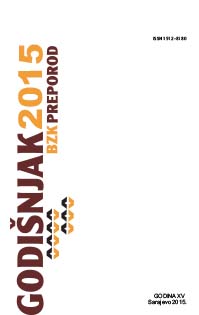Narod bez prava na genocid
THE PEOPLE WITH NO RIGHT TO GENOCIDE
Author(s): Fahira Fejzic ČengićSubject(s): Military history, Studies in violence and power, Post-Communist Transformation
Published by: Bošnjačka zajednica kulture "Preporod"
Keywords: genocide against Bosniaks; judgment in The Hague; culture of remembrance; students’ attitudes; public;
Summary/Abstract: The crime of genocide against Bosniaks in Bosnia and Herzegovina was committed in the period 1992-1995. The Convention on the Prevention and Punishment of Genocide has been violated because there was intent to destroy the Bosniak people. This fact, even though confirmed by the International Court of Justice for the former Yugoslavia in its judgments on February 27, 2007, and the Congress and Senate of the United States of America and numerous Bosniaks international organizations from abroad, among alive Bosniaks, especially the youth, the meaning and weight of these terrible events are poorly recognized and mutely and inarticulate inherited. Just a day after the judgment, the young students of journalism were asked how they have experienced and how they feel after the shameful judgment that was an act of genocide and the role of the aggressor Serbia that ‘actually blurred and covered up’. Their statements were bitter, heavy, and full of pain, sorrow, hopelessness, shock, grief. Especially for young people who were born in parts of the country from which they were expelled. -’Yesterday, the world showed their true colours’, has been the main student message. Personally, I wrote an essay entitled ‘The people with no right to genocide’ (Poor nominations for genocide), expressing the pain, bitterness and intellectual cynicism - all I have remained at that moment as flattering award for the best essay on the internal competition within the institution where I am employed. Since the young people are our future, we urgently need to establish all possible and feasible ways and mechanisms to preserve ‘collective and individual memory’ to genocide. Through the family narrative, schools, colleges, mass media, religious events, scientific and research meetings, conferences, congresses, through the Book of Remembrance, the Book of Pain and books of various testimony, the testimony of facts and that is most important, as well as through video, photography, drama, poetry, novels about genocide against Bosniaks.
Journal: Godišnjak Bošnjačke zajednice kulture »Preporod«
- Issue Year: 2015
- Issue No: 1
- Page Range: 219-237
- Page Count: 19
- Language: Bosnian

